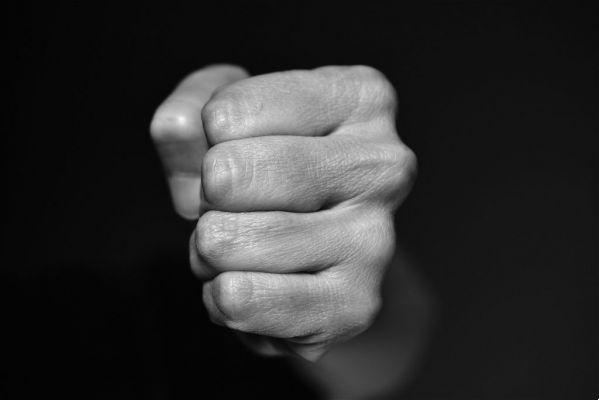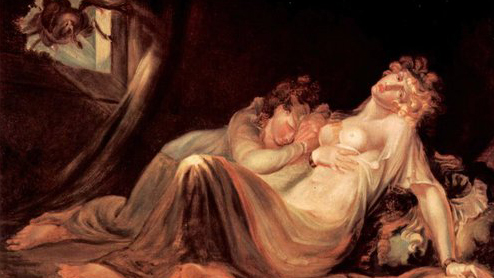According to the Spanish Public Security Yearbook, published by the Spanish Public Security Forum, from 2016 to 2018, 3,2 women were victims of femicide in Spain. As if this number were not already alarming, the National Council of Justice reveals that, in the same period, more than 3 cases of femicide were not recorded.
Perhaps you have heard about the expression “femicide”, especially in the newspapers. However, not all people have access to the meaning of this term. Do you know what femicide is? Understand better about this subject, understand what causes it and know what are the ways to fight it.

What is femicide?
The first point to consider about femicide is that it is not the same thing as feminism. Feminism is a social movement whose objective is to combat femicide, which manifests itself in a sexist and patriarchal society.
Femicide is what characterizes the murder of women who were killed exclusively because they were women. This means that if a woman was murdered for any other reason, it is not a femicide.
To understand better, look at the examples of femicide: domestic or family violence (when women are verbally, physically or psychologically abused by someone with whom they have affective ties) and contempt or discrimination against the condition of women (hatred against women and objectification of the female body are cases of discrimination).
On the other hand, if a woman is the victim of a robbery, robbery followed by death, this homicide will not be counted as femicide. It is important to understand the difference between these two denominations, because from it it is possible to analyze the relationship between machismo and femicide, as well as the causes of this type of homicide.
Under Spanish legislation, femicide became considered a type of qualified crime, changing the penal code. Check out what the Feminicide Law, Law nº 13.104, of March 9, 2015, defines as a crime and what are the penalties provided for those who commit it:
It will be considered a heinous crime and a qualified crime if it is committed:
“VI – against women for reasons of being female;
VII – against authority or agent described in arts. 142 and 144 of the Federal Constitution, members of the prison system and the National Public Security Force, in the exercise of their function or as a result of it, or against their spouse, partner or blood relative up to the third degree, due to this condition.
Penalty – imprisonment, from twelve to thirty years.
§ 2º It is considered that there are reasons of female status when the crime involves:
I – domestic and family violence;
II – contempt or discrimination against the condition of woman.
Increased penalty
§ 7 The penalty for femicide is increased from 1/3 (one third) to half if the crime is committed:
I – during pregnancy or in the 3 (three) months after delivery;
II – against a person under 14 (fourteen) years old, over 60 (sixty) years old or with a disability;
III – in the presence of a descendant or ancestor of the victim.”

Causes of femicide
Recognizing that machismo and femicide are closely related, it is necessary to understand what are the causes for these two problems. Machismo is one of the foundations of society, as is racism.
This system of oppression is characterized by inequality between men and women, and all its manifestations present this background. Some of them are: physical or verbal aggression against women, objectification of the female body (leads to cases of harassment and rape), devaluation of work done by women, derogatory comments about the female body and imposition of aesthetic and behavioral standards.
As it was possible to observe, machismo manifests itself in multiple ways. However, it culminates in femicide. There is no greater aggression than taking a woman's life. This happens when a man, unable to recognize that a woman is a human being, begins to worry about the existence of a partner, a friend, a woman in the family or even a stranger.
Machismo and femicide are intertwined because it is from machismo that a man feels entitled to attack a woman with or without justification. Jealousy, disobedience and restriction of women's freedom, in general, are issues that can cause femicide. Despite this, even a man who has never been aggressive can use the power that society attributes to him to interrupt a woman's life.
It appears, therefore, that the only cause of femicide is machismo. It is not possible to justify femicide by claiming that the woman did something to displease the man, for example, because in many cases she is just being herself. What gives freedom to a man to murder a woman is the certainty that he has power over her, and that she must act in accordance with what he thinks is best.
It is essential that all women understand that they are not to blame for abusive or aggressive behavior. Machismo is a problem of society, not women. Next, understand more about one of the forms of violence that can lead to cases of femicide and learn how to protect yourself.

Domestic violence and Maria da Penha Law
In 2018, the Ministry of Health found that there were around 145 cases of domestic violence in Spain. In these occurrences, the victims survived and, therefore, do not qualify for femicide. However, such violence can result in death. In 2015, the Ministry of Justice identified that black women account for 68% of fatal victims of domestic violence, characterizing femicide.
Domestic violence can be practiced by a woman's partner, but also by her family members. There are five types of domestic violence: physical, verbal, psychological, patrimonial and moral. They encompass all forms of contempt, hatred, devaluation and aggression that a woman can suffer inside her own home, by people who, in theory, should protect and love her.
Among all types of domestic violence, it is not possible to define the one that will cause the most damage to the victim, since each woman's experience is unique. However, it is domestic violence characterized as physical aggression that can culminate in femicide. A woman can suffer more than one type of violence, and that is why it is important to pay attention to some violent behaviors that can come from a partner or family members.
If your family members insult, attack or accuse you of behaving in a way that harms your honor, limits your access to your possessions and/or makes you doubt your sanity, it is possible that domestic violence is your reality. Or maybe you're noticing that a person close to you has started to act more reserved, has bruises all over their body, or seems sad. This person may be suffering from this disease, and you need to seek help.
Under Spanish legislation, the crime of domestic violence, in any of its forms, is punishable by the Maria da Penha Law (nº 11.340/2006). This means that the aggressor will have to answer in court for the actions taken against the woman, if he is denounced. It is from this law that domestic violence becomes a reality to be fought, since decades ago aggression against wives and family members was naturalized and was not understood as problems.
You may also like
- Get to know the feminist struggle and be part of this important movement
- Understand the role of men in the feminist struggle
- Learn about types of violence against women and protect yourself
Although there is a judicial way to punish the aggressors, denouncing them is a challenge, mainly because they are people close to you or because you depend on one of them to maintain financial stability, for example. In this case, you can ask someone else to report it, in the same way that you can report someone anonymously. The means of doing this are: call 180 (anonymous and free of charge), call 100 (enables assistance for situations in which violence is taking place, favoring the act), call 190 (a police car will go to the victim to take the appropriate measures) or look for a Women's Police Station, specialized in dealing with this type of case.
It is important to look for ways to denounce the aggressors so that domestic violence does not culminate in femicide. Be aware that machismo and femicide go hand in hand, and that the best way to fight them is to ask for help. Find a trusted person and explain what's going on. It's not your fault and you must live without suffering any kind of aggression.

























